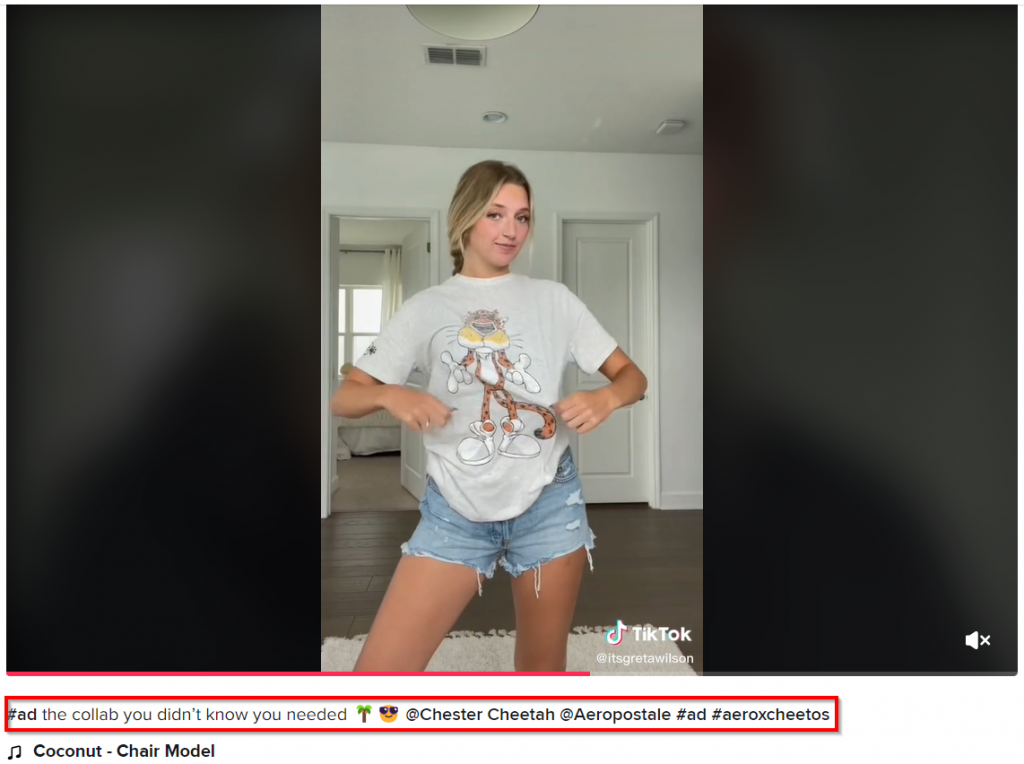What Is Influencer Marketing (Definition, Tips & Examples)
Influencer marketing is the modern, digital child of the traditional marketing approach of celebrity endorsements (e.g., the brand ambassadors) of your brand’s products.
Unlike its “parent,” influencer marketing is far more accessible to brands of all sizes and comes with many perks, such as better targeting and more.
Our guide will shed light on this marketing channel and help you understand its intricacies.
What is Influencer Marketing?
Influencer marketing is a digital marketing channel where companies and brands collaborate with social media creators and influencers to promote their products with content created by these influencers.
Although this marketing approach is relatively new in the digital marketing sphere, it is growing rapidly and becoming very popular (the market was worth $13.8 billion in 2021).
Influencer marketing is becoming widespread thanks to many marketing tactics it includes and its ability to reach highly-engaged audiences with trustworthy messages and get a precise match between the needs of these audiences and the products that your brand is offering. It is also tightly connected with content marketing and social media marketing, as, in most cases, brands collaborate with social media influencers through branded content.
Now let’s see how influencer marketing works with an example from Instagram posts.
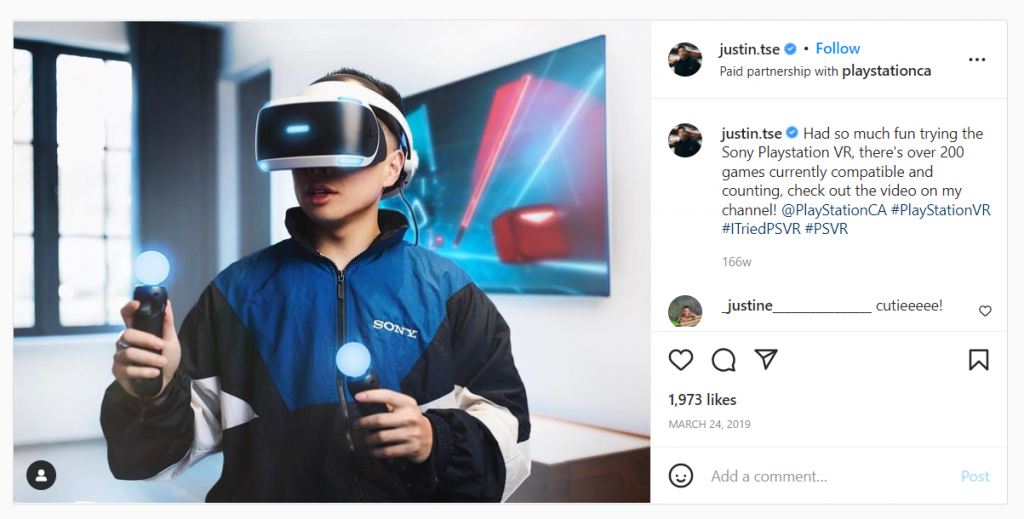
In the post above, we have Justin Tse, a tech and lifestyle influencer with 122,000 subscribers on his Instagram channel.
Here, Justin is doing a product placement for PlayStation VR, a virtual reality product by Sony, to the channel’s audience. He also often runs giveaways. The reason Sony collaborates with Justin is that his audience is full of gamers and tech enthusiasts likely to buy the PlayStation VR.
Influencer Marketing vs Traditional Marketing
The main difference between influencer marketing and traditional marketing, or traditional advertising, is that traditional marketing relies on channels such as TV, print, or billboard ads to market the brand and products with openly promotional messages, while influencer marketing prefers impacting purchase decisions through subtle native advertising messages that you spread out through the content influencers create and share with their audiences.
To have a better understanding of their differences, let’s take a look at the main pro and con of each type of marketing.
Traditional Marketing Pro: This is a tried and tested approach that many companies have been using for decades. Thus, many marketers know how to do it right. It’s also a great way to reach out to a big number of people fast.
Traditional Marketing Con: It is ineffective for reaching the new audiences – the younger and more tech-savvy ones (e.g., millennials). To prove our point, Forbes with the reference to the research by McCarthy Group has stated that 84% of millennials don’t like traditional marketing and don’t trust it.
Influencer Marketing Pro: Influencers already have big audiences they have a trustworthy relationship with, meaning the results of such campaigns will appear faster than with traditional marketing. Besides, influencer marketing resembles word-of-mouth marketing in its ability to spread the message fast.
Influencer Marketing Con: It can be challenging to find an influencer fit for your niche.
With the difference between these two clear, let’s understand what the main reasons that digital marketers like influencer marketing are.
5 Benefits of Influencer Marketing
Influencer marketing is a highly effective channel for promoting your brand and products. The main reason is that the people who advertise your brand are big and small celebrities on the internet, who have become fan favorites for millions of followers, and whose content can potentially receive a significant number of comments, likes, and shares.
To further solidify our point, here are five more convincing benefits of doing influencer marketing.
Benefit #1: It raises brand awareness
If your goal is to increase the brand awareness of your company or products, then influencer marketing should be your channel of choice. If you are not convinced yet, here are a couple of statistics that will help change your mind:
- Social platforms have exceptionally large user bases. We speak about 2.9 billion users on Facebook (37% of all humanity), 1.2 billion users on Instagram, and 1 billion on Tik Tok.
- Large influencers have massive audiences. If we sum up the followers for the 50 largest Instagram influencers alone, the number will be somewhere around 2.5 billion followers.
- The audiences of nano-influencers are highly-engaged. If the average engagement rate for an Instagram influencer is slightly above 2%, nano-influencers enjoy a much higher rate at around 5%.
Thus, with their ability to reach a massive audience with a high engagement rate, influencers are a great option for brand awareness campaigns.
Benefit #2: It makes your brand trustworthy
Another reason digital marketers love collaborating with influencers is that they help build trust in the brand and its products.
Influencers, especially those who specialize in a specific niche, usually enjoy a high level of trust among their followers. This is usually because these niche influencers are professionals with lots of knowledge in their area.
When they share their opinion about a product or service related to their niche, their audience will consider these recommendations trustworthy and will be very likely to follow the influencer’s advice and buy or try it.
Now let’s solidify our point with an example.
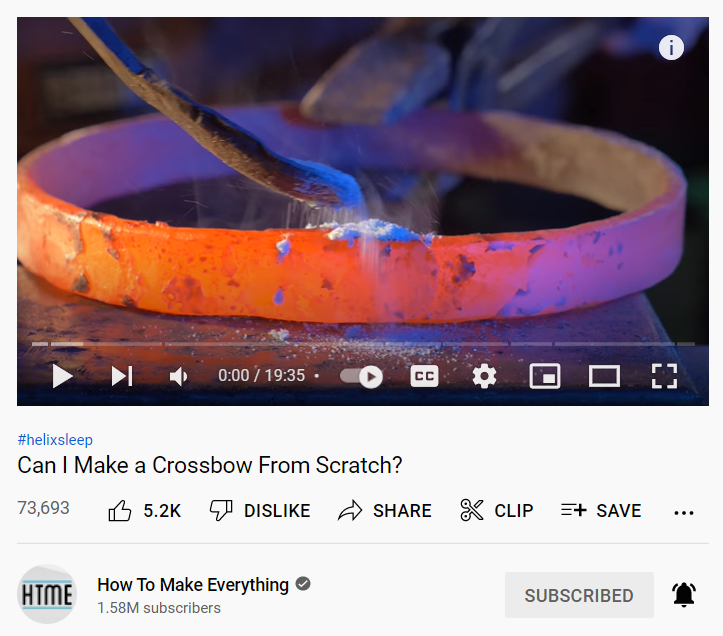
In the video above, we have Andy George, the author of the YouTube channel “How To Make Everything,” with 1.6 million followers. Andy is a guru of DIY projects, having made many everyday objects and even entire buildings by hand.
With so much expertise in DIY, if Andy starts promoting construction tools, his fans will definitely trust his opinion and choose the brand he has recommended.
Benefit #3: It’s cost-effective
In a world where advertising costs are high up in the sky (we speak about a 90% spike in CPM during the first quarter of 2021 alone), influencer marketing is an option to reach the same or better results for a lower marketing budget.
Of course, it all depends on how well you execute your influencer marketing campaigns, but in general, it is among the more budget-friendly marketing channels out there.
The cost of collaborating with influencers mainly depends on two factors – their size and niche. Larger influencers charge a significant amount per post, but in terms of CPM, their promotions are still more cost-effective than paid ads.
When it comes to smaller influencers, you benefit from two factors simultaneously. The first factor is that they charge significantly less, and many of them even do promotions in exchange for you gifting them your products. The second factor is that you are getting more return on investment from these nano-influencers (or other smaller types of influencers) thanks to the superior level of engagement of their audience.
Benefit #4: It helps reach your audience
Finding the right audience and reaching them in an effective way has been one of the bigger challenges for digital marketers.
Fortunately, influencer marketing is a great choice here too. You have the freedom to choose between general audiences or those interested in specific niches. All you need to do is contact the influencer with the audience you are looking for.
If you want both niche-agnostic generic audiences and a large number of followers, then celebrity influencers are your choice.
On the other side, if you need people interested in a particular topic (e.g., designer skateboards), then you can go for the smaller and more niche-oriented influencers.
In both cases, influencer marketing gives you the freedom and flexibility to reach any type of audience you want.
Benefit #5: It builds relationships
The field of influencer marketing is heading towards creating long-term relationships with influencers instead of making one-off deals with them, as the length of a partnership with influencers is more than 6 months for around half of all advertisers.
There are several reasons why marketers prefer these relationships:
- Long-term partnerships are more cost-effective, as you can negotiate pricing for a large promotional program with your partner influencer.
- You constantly monitor, learn, and improve the promotional materials together.
- The influencer’s audience gets more long-term exposure to your brand and products.
Working with long-term partners also saves you a significant amount of time, as you do not have to do lots of onboarding and introductory meetings with them to present your brand and products.
To sum up, influencer marketing is an excellent option for promotional campaigns thanks to its low costs, high reach, and trustworthiness.
But you can enjoy all of these perks only if you are doing it right. Our next section will cover a couple of valuable tips on how to launch an effective influencer marketing strategy.
4 Influencer Marketing Strategy Tips for Successful Campaigns
Working with influencers is a lot of fun! You get to meet people of many backgrounds, interests, styles, and niches. It is also a great way to diversify your content creation process.
However, if you want to get the most marketing output out of your collaborations with the content creators, you need to know how to do influencer marketing right.
Here is a list of four valuable tips for those digital marketers who wish to partner up with influencers and promote their products or services.
Tip #1: Set the right goals
Ideally, you would kick off your influencer marketing activities with the definition of your goals. When you know what your desired business outcome is, everything becomes clearer and easier to manage.
Depending on your company’s plans, your product’s position in the market, and other factors, you can have very different goals to reach with influencer marketing. Here are two of the most common ones:
- Increasing brand awareness: When you care more about your target personas recognizing your brand and considering you a trustworthy company/product in your niche.
- Increasing sales revenue: When you want to increase the number of marketing or sales-qualified leads, the number of purchases or subscriptions to your products.
Here is what a brand awareness influencer campaign looks like in real life:
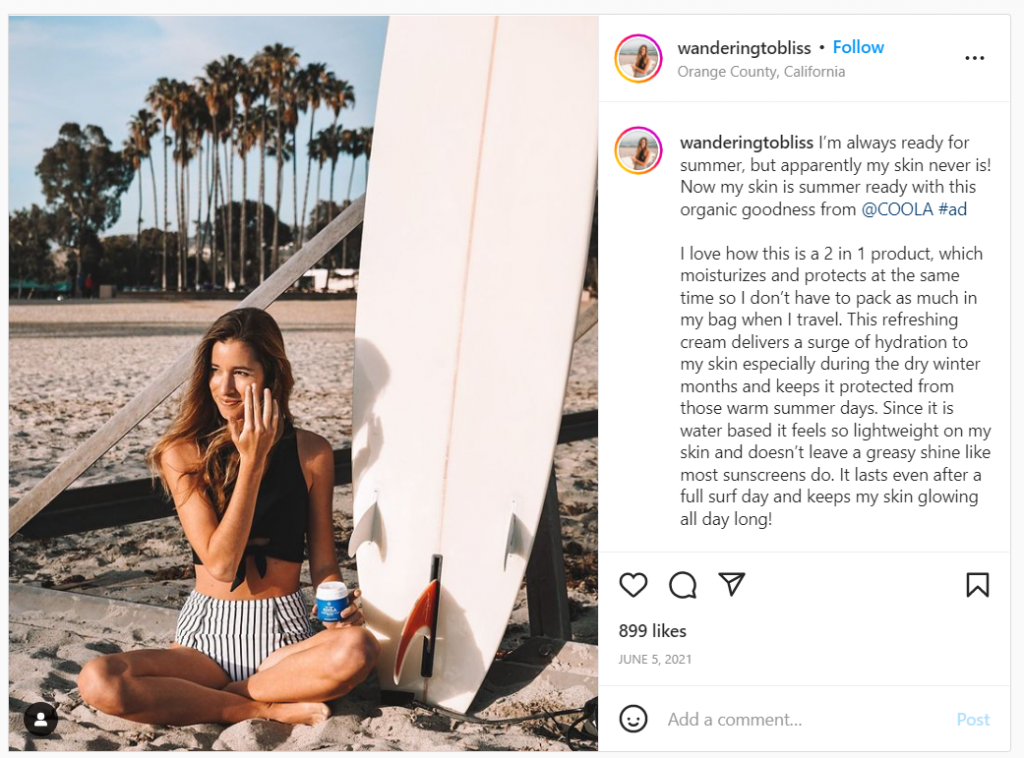
This sponsored post belongs to Kayla, a nano-influencer from California, who is collaborating with luxury organic skincare manufacturer COOLA to increase its brand awareness.
Returning back to goal setting, the main reason that you should start with the goals first is that all your consecutive activities will depend on your decision and can differ vastly depending on what you are planning to achieve. In particular, your goals will dictate the following:
- Social Media Platform: You might decide to stick to LinkedIn if you want to improve B2B software sales. But if your goal is to increase brand awareness of a luxury car, Instagram might be the better choice.
- Influencer Size: Some marketers prefer to work with mega influencers and celebrities with large followings for brand awareness campaigns and boost sales with the help of macro-influencers and micro-influencers.
- Messaging and Creatives: When you want people to learn about your brand and trust you more, other than showcasing your products, you can also ask the influencers to talk about your brand in general. But for sales campaigns, you need the influencers to promote the specific products and services you offer.
Another important aspect of digital marketing that your goals will dictate is the KPIs and tracking, as, for instance, you would need to monitor different metrics for the brand awareness campaign versus a sales campaign.
Tip #2: Define a target audience
Having clear goals and business needs can help you immensely. But there is one more important aspect that you need to figure out before starting your campaign – the people you want your influencers to reach.
Just like with your goals, the audience you want to target will also affect the messaging, influencers, timing, and other aspects of your campaign.
When defining your target market, you should take into consideration aspects such as:
- Needs and jobs-to-be-done: What are the pains and problems that your target users experience? For instance, if you are selling flashlights, you might decide to target campers who need a portable light source during their trips.
- Demographics: What is the typical age or educational background of your audience? If you want to target high school teenagers, you would probably collaborate with Tik Tok or Snapchat influencers and use messaging that appeals to them.
- Language and Geography: Do you want to reach out to an international audience? If yes, you should consider working with influencers who create content in all the languages that your audience speaks. If you are targeting a single city or state, you will need to work with the local influencers.
When targeting an audience that resides in multiple countries, you should consider the various laws and regulations these countries have on native advertising. For instance, U.S. advertising and influencer marketing are subject to the FTC regulations, as we can see in the example social media post below.
FTC requires all creators to disclose the fact that their influencer content includes a paid promotion. In Tik Tok, influencers use the #ad hashtag for that purpose, including the video above, which is a collaboration between fashion influencer Greta Wilson and retailer Aeropostale.
Tip #3: Choose the right influencers
It is your partnerships with the right influencers that will make or break your campaign. So you need to pay special attention to the search and selection of the influencers you want to work with.
Among the many methods that you can employ to find and contact influencers, here are the two most common ones.
Using Hashtags: Influencers usually actively use hashtags in their posts and content. Hashtags are about existing trends (e.g. the popular #IceBucketChallenge), holidays or seasons (e.g. #halloween), events (e.g. #oscars), interests (e.g. #camping, #morningroutine), and brand or product names (e.g. #ASUS, #Note20).
If you want to find influencers who post a specific type of sponsored content, you can simply search for the appropriate hashtag on the social media platform of your choice and see which influencers show up.
Via specialized SaaS marketing tools: If you need to filter out influencers in bulk, reach out to and collaborate with tens or even hundreds of influencers at once, you will need to turn to the help of influencer marketing SaaS tools and services.
These tools have a massive database of influencers, including the size of their following, engagement rate, and the list of social media platforms they use. Thanks to their intricate search and filtering features, these tools allow you to select the parameters of your interest and find out all the influencers that match it.
Below is an example of influencer search results on the influencer marketing platform Insense.
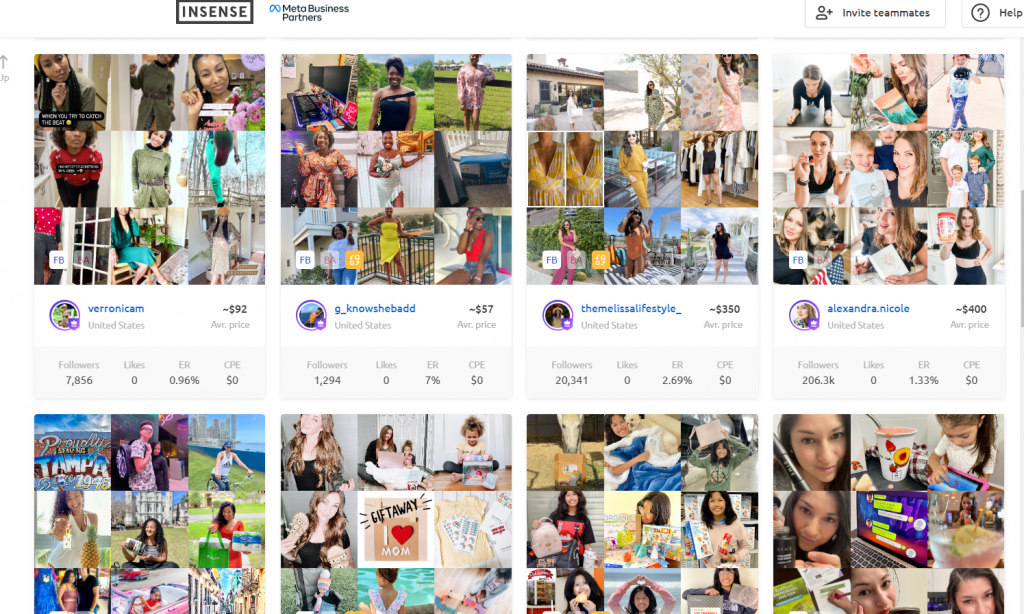
In the case of Insense, you can view influencers from either Instagram, TikTok, or both, and get data on the audience breakdown by demographics, follower count, influencer posts, and the percentage of fake followers or bots.
Tip #4: Monitor performance
Even if you know your goals and audience and you have started running campaigns with the influencers that fit your needs the best, you cannot be sure if your marketing efforts are effective without proper tracking and monitoring.
If you pick the right metrics for your successful influencer marketing initiatives and constantly monitor them, you will be able to see the difference between:
- The strategies, content, or influencers that work the best, and, therefore, it is worth keeping them as is.
- The ones that are underperforming and require a revamp, or you need to drop them entirely.
In both cases, you are able to increase the performance and the ROI of your campaigns.
In terms of the metrics you need to track for influencer marketing campaigns, here are some of the most popular ones:
- Conversion rate. It includes overall conversion and the rate per influencer and campaign.
- Referral traffic. Here too, you can track the total traffic and its breakdown by creators and campaigns.
- Reach and awareness. These are especially important metrics to track for campaigns aiming to increase brand awareness.
- Engagement. Influencers with a highly engaged audience are more likely to bring you potential customers. Thus, you should monitor this metric for each influencer you work with.
You’ll also need to track some standard digital marketing metrics, such as ROI, sales revenue, and others.
To conclude, influencer marketing is both fun and effective as a marketing channel. But to make sure that your ROI is high, there are best practices that you need to follow.
With the benefits and tips of influencer marketing behind us, let’s illustrate how this marketing strategy works with three prominent examples.
3 Influencer Marketing Examples to Get Inspired By
One of the great benefits of influencer marketing is the freedom and flexibility that both you and your creators get.
If you are looking for inspirational examples of influencer marketing to boost your creativity, this section is right for you.
Example #1: Daniel Wellington
Daniel Wellington is a Swedish producer of luxury accessories, well-known for its watches.
But this company is not only famous for its accessories. Digital marketers know this brand very well, too, as a great case study for doing influencer marketing right (for that exact reason, we have featured it in our curated list of influencer campaigns too).
Since its conception, Daniel Wellington has leveraged the power of social media influencers and used many best practices to drive the sales of its luxury products.
Some of these practices include using branded hashtags, the preference of nano-influencers over celebrities, targeting fashion and lifestyle niche influencers, and more.
The example below is among the many that influencers have made to promote the products of Daniel Wellington.
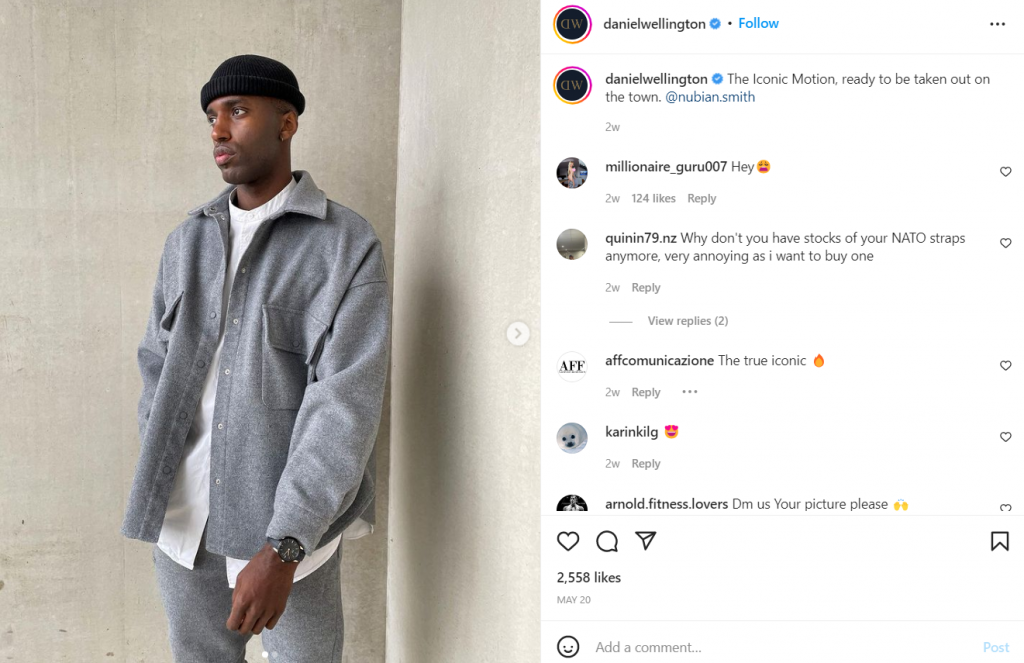
This post belongs to Nubian Smith, an influencer with 55,000 followers who partnered with the brand to showcase its latest collection.
Example #2: NordVPN
NordVPN is an online security and privacy company famous for its VPN service.
If you have ever watched any tech or gaming content on YouTube, the chances are high that you have met at least one influencer who has promoted NordVPN.
The reason is that, just like our previous example, NordVPN is actively using influencer marketing for its growth. In particular, the company prefers YouTube and the influencers specializing in creating content related to PC-building, high-tech, and gaming.
Our example below is gaming content that has the NordVPN promo links in it.
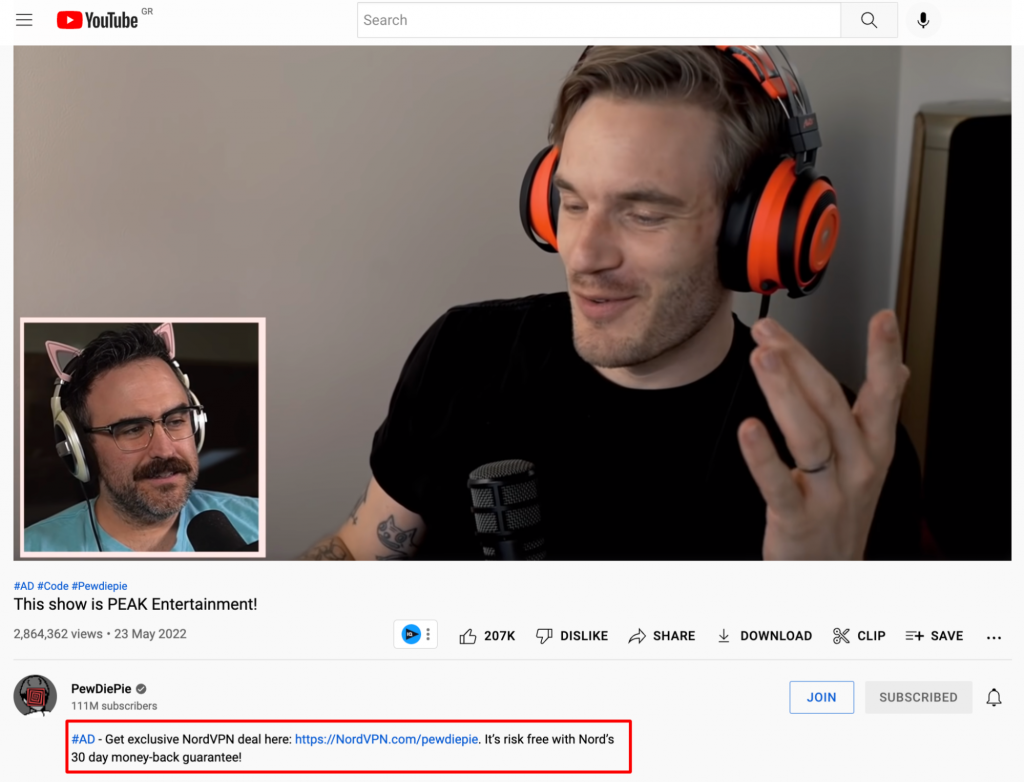
This is a video by the most famous YouTuber out there – PewDiePie, who has a massive audience of 111 million subscribers.
PieDiePie has included a link in his video content with a special deal by NordVPN.
Example #3: Gymshark
Gymshark is a producer of sports clothes and accessories from the UK and an eCommerce store.
Among digital marketers, Gymshark is also a well-known case study, thanks to the many creative and smart approaches it has taken when collaborating with influencers.
In particular, the company started its influencer marketing with a small group of social media athlete stars and created its so-called “Gymshark Athlete Community” that started actively promoting its sportswear.
The next step was the creation of Gymshark “ambassadors” – sports and fitness influencers who would receive free products from the brand in exchange for videos and posts that showcase them to their audience.
Here is one of those videos on Tik Tok.

The blogger in question is Libby Christensen, who has over 260,000 followers. Just like many of her peers, she is showcasing clothes by Gymshark in her videos.
We hope that these three compelling examples served as a good source of inspiration for you to start your own influencer marketing campaigns.
Now Over to You
No matter if you want more people to recognize your brand or you need to reach that sales goal, influencer marketing can be of great help to you with its precise targeting, wide reach, and high authenticity.
There are many more guides about digital marketing in our blog. Go check them out!

Sona Kalantaryan is a senior digital marketer with a creative past. Big fan of high cinema and well-optimized landing pages. She authors guides by sharing the best practices and does it the right way!

